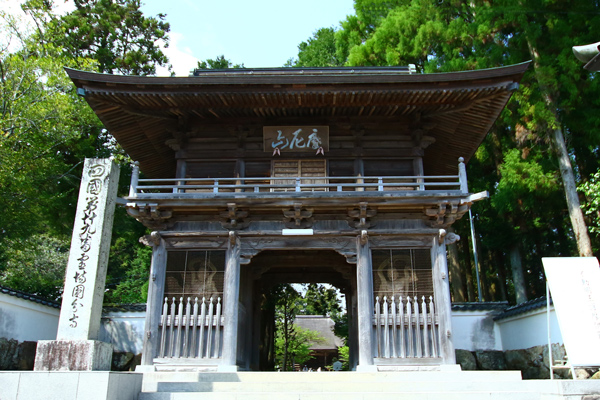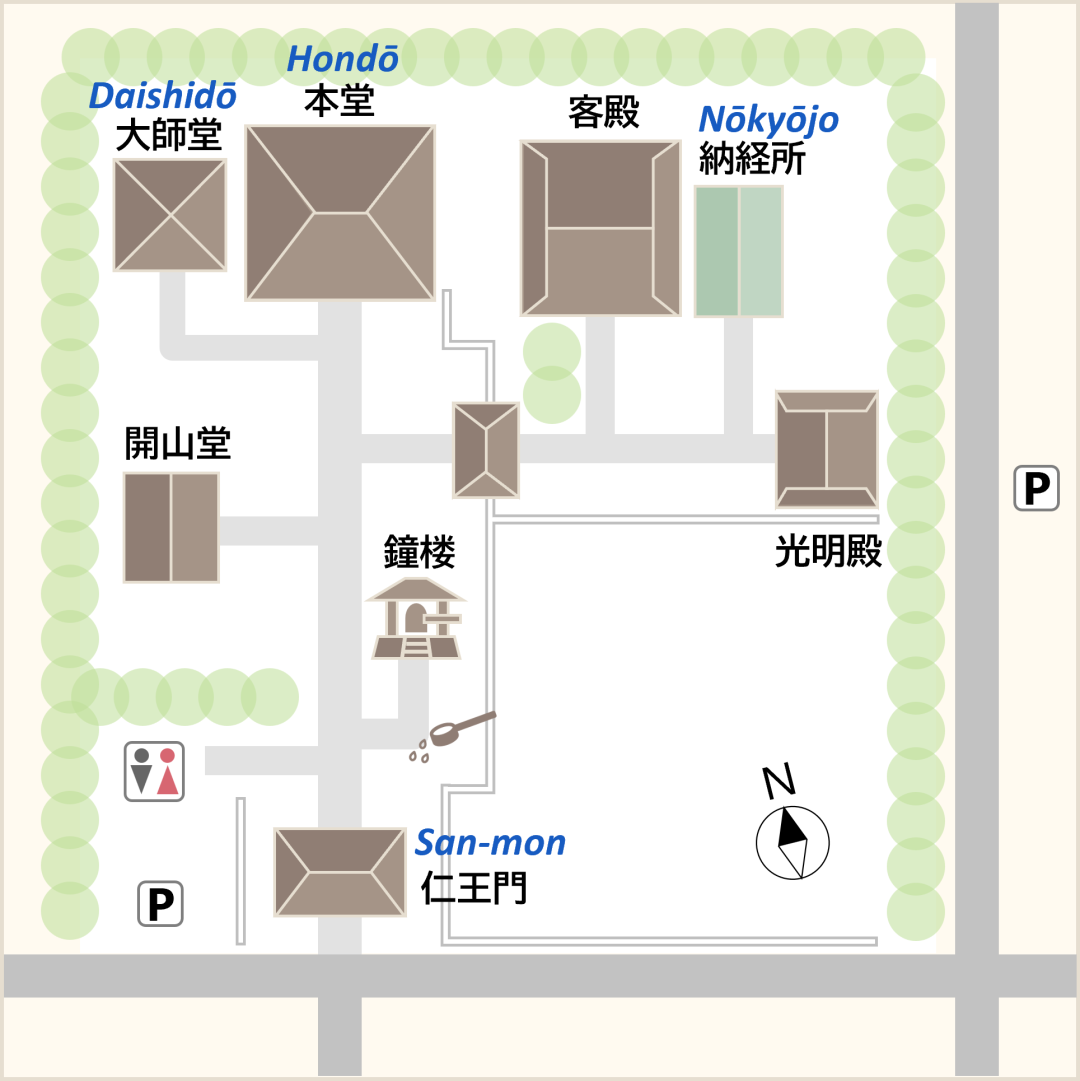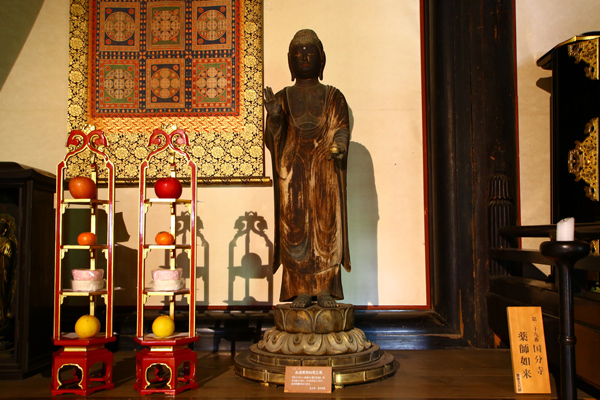The Shikoku Pilgrimage Temple Guide
Temple 29, Tosa Kokubunji

Precinct map

History of the temple
Kokubunji Temple in Tosa (Kochi) is associated with the mid-Heian period poet Kino Tsurayuki (about 868-945). Kino’s most famous work is Tosa Nikki (Tosa Diary), which is written in kana, the phonetic alphabet which women of that time used to write. The provincial office which was his headquarters for four years when he served as governor was located about one kilometer northeast of Kokubunji. It was the political, economic, and cultural center of Tosa, and was, along with Kokubunji, known as the Mahoroba of Tosa (the Wonderful Place of Tosa).
Around the year 740, Emperor Shomu (reigned 724-749) dedicated a copy of the Konkomyo Saishokyo which he had transcribed, and ordered the construction of 68 Kokubunji (provincial temples) in provinces throughout the country. In Tosa, the provincial temple was founded by Gyoki to pray for peace, a rich harvest, and prosperity for all people. Since that time, the temple has been supported and blessed by emperors.
According to legend, Kobo Daishi made a pilgrimage to this place in 815, carved a statue of Bishamonten (Vaishravana), and enshrined the statue within the temple. He also performed a secret ceremony in the Hondo called hoshiku to ward off evil spirits, a practice which had been passed down from generation to generation by the eight patriarchs of the Shingon sect. Since then, Tosa Kokubunji has been the main temple for hoshiku.
The Hondo of Kokubunji (also called the Kondo), which enshrines the principal image of Senju Kannon Bosatsu (Thousand-armed Bodhisattva Who Hears the Sounds of the World), was rebuilt in 1558 by Chosokabe Kunichika and his son, Motochika. The exterior of the hall is built in the Tenpyo style with a persimmon thatched roof and a hipped roof, while the ebi koryo (beams to connect the pillars that look like shrimp) inside are said to be the oldest in Tosa, showing characteristics of the Muromachi period (1336-1573). It is a National Important Cultural Property. The Niomon Gate was originally built in 1655 as a donation from Tosa's second feudal lord, Yamauchi Tadayoshi. The present Niomon gate is a two-story structure rebuilt at the beginning of the Showa era (1926-1989). The entire area of the temple grounds, which still retains its original appearance of more than 1,250 years ago, is a National Historic Site and is also known as The Moss Temple of Tosa for its beautiful cedar moss garden.
Highlights
National Designated Cultural Property
Wooden standing statue of Yakushi Nyorai. Other cultural assets include the temple bell.
Kondo
The exterior of the hall is simple, but has a graceful and quiet elegance.
Hondo and Garden
The garden, with the Hondo in the background, is a beautiful place of cherry blossoms and peonies in spring, hydrangeas in early summer, and bush clover in autumn. There is also a monument to Takahama Kyoshi's fifth daughter, eldest son, and grandson, Takagi Haruko, Toshio, and Inahata Teiko, repectedly.
Ruins of a Yayoi Period dwelling
Discovered during excavations in 1977

Annual Events
| February 3 | Setsubun Hoshi Matsuri (Purifying fire ritual) |
| April 8 | Hana Matsuri (Buddha’s Birthday) |
| July 17th | Jushichiyasai (Obon Sokuyo) |
| 21st of every month | Mieiku (Memorial service for Kobo Daishi) |
| 8th of every month | Fudo Gomaku (Goma fire ritual) |
| December 31 | Joya no Kane (New Year’s Eve bell) |
Details
Names: Manizan, Hozoin, Kokubunji
Denomination: Shingon sect, Chizan school
Principal Image: Senju Kannon Bosatsu
Founder: Gyoki
Founded: 741
Access
Address: 546, Kokubu, Nankoku City, Kochi 783-0053
Phone: 088-862-0055
Parking: 45 Cars, 5 Buses (free)
Lodging: None
Official website: http://www.tosakokubunji.org/
